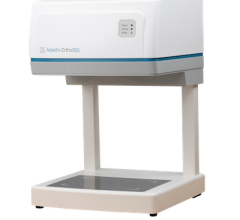
December 23, 2019 — The U.S. Food and Drug Administration cleared for marketing in the U.S. the first fully disposable duodenoscope. The EXALT Model D Single-Use Duodenoscope is intended to provide visualization and access to the upper gastrointestinal (GI) tract to treat bile duct disorders and other upper GI problems.
“The availability of a fully disposable duodenoscope represents another major step forward for improving the safety of these devices, which are used in more than 500,000 procedures in the U.S. each year. Unlike duodenoscopes that are used on multiple patients, a fully disposable duodenoscope doesn’t need to be reprocessed, eliminating the risk of potential infection due to ineffective reprocessing,” said Jeff Shuren, M.D., J.D., director of the FDA’s Center for Devices and Radiological Health. “Improving the safety of duodenoscopes is a top priority for the FDA since such devices remain critical to life-saving care for many patients, and the FDA continues to encourage innovative ways to improve the safety and effectiveness of these devices.”
Duodenoscopes are used as a less invasive method than traditional surgery to drain fluids from pancreatic and biliary ducts blocked by cancerous tumors, gallstones or other gastrointestinal conditions. The flexible, lighted duodenoscope is threaded through the patient’s mouth and stomach to access the top of the small intestine. Traditionally, these devices have been intended for use on multiple patients, which has required these devices to be cleaned and disinfected (i.e. reprocessed) in between uses to reduce the potential for infection between patients. However, duodenoscopes are complex medical devices with many small working parts that can be difficult to clean. The device can trap contaminated tissue or fluid in its crevices and, if not thoroughly cleaned and disinfected, it can transmit infection-causing bacteria between patients. The EXALT Model D Single-Use Duodenoscope is intended for use on a single patient, therefore removing the potential risks associated with ineffective reprocessing.
The FDA previously issued communications to health care facilities regarding risks associated with ineffective reprocessing of duodenoscopes that are used on multiple patients. In August, the FDA released a safety communication recommending that duodenoscope manufacturers and health care facilities transition to duodenoscopes with partially- or fully- disposable designs, which can simplify or eliminate the need for reprocessing of certain components, therefore reducing or eliminating between-patient duodenoscope contamination. The FDA previously cleared duodenoscopes with disposable endcap and elevator components. Today’s clearance is the first fully disposable duodenoscope device.
Risks of using the EXALT Model D Single-Use Duodenoscope include the potential for injuries, such as, but not limited to, burns, electric shock, perforation, infection and bleeding.
The EXALT Model D Single-Use Duodenoscope was granted Breakthrough Device designation, meaning the FDA provided intensive interaction and guidance to the company on efficient device development to expedite evidence generation and the agency’s review of the product. To qualify for such designation, a device must be intended to treat or diagnose a life-threatening or irreversibly debilitating disease or condition and meet one of the following criteria: the device must represent a breakthrough technology; there must be no approved or cleared alternatives; the device must offer significant advantages over existing approved or cleared alternatives; or the availability of the device is in the best interest of patients.
The EXALT Model D Single-Use Duodenoscope was reviewed through the premarket clearance (510(k)) pathway. A 510(k) notification is a premarket submission made by device manufacturers to the FDA to demonstrate how a new device is substantially equivalent in intended use and technological characteristics to a legally marketed predicate device. As part of the premarket clearance process, the FDA reviews the information in the 510(k) submission to determine whether the device proposed to be marketed is substantially equivalent to a predicate device.
The FDA granted clearance of the EXALT Model D Single-Use Duodenoscope to Boston Scientific Corporation.


 December 05, 2025
December 05, 2025 









